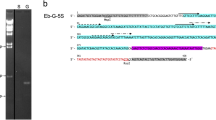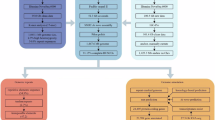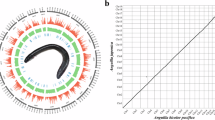Abstract
WHILE I am in substantial agreement with the conclusions of Dr. Sick et al., I feel that there is still an important point to be emphasized. The hæmoglobin tests show a close affinity between the American and European eels as opposed to the Japanese. They are therefore in striking contrast to the biometric criteria hitherto applied by taxonomists of Schmidt's school1, for these, on the contrary, showed an apparently close relationship between the European and Japanese species as opposed to the American: 
This is a preview of subscription content, access via your institution
Access options
Subscribe to this journal
Receive 51 print issues and online access
$199.00 per year
only $3.90 per issue
Buy this article
- Purchase on SpringerLink
- Instant access to full article PDF
Prices may be subject to local taxes which are calculated during checkout
Similar content being viewed by others
References
Ege, V., Dana Rep., 3, No. 16 (1939).
Tucker, D. W., Nature, 183, 495 (1959).
Author information
Authors and Affiliations
Rights and permissions
About this article
Cite this article
TUCKER, D. Hæmoglobin Pattern and Chromosome Number of American, European, and Japanese eels (Anguilla). Nature 193, 1002 (1962). https://doi.org/10.1038/1931002a0
Issue date:
DOI: https://doi.org/10.1038/1931002a0



